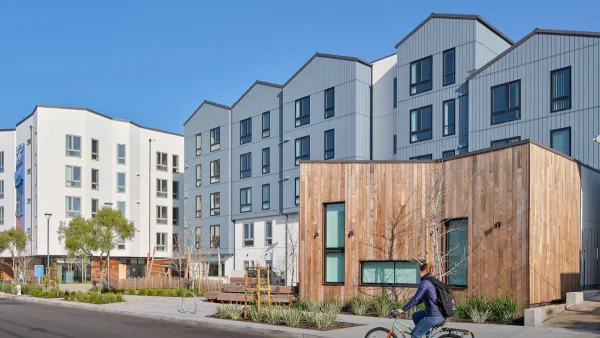This brief details the importance of TEA-21 reauthorization for the nation's metro areas and offers a comprehensive policy agenda for Congress' work on the bill.
Congress will soon decide how to allocate more than $200 billion over the next five years to preserve, modernize, and expand the U.S. surface transportation system. When it does, it will update two recent reforms of federal surface transportation law that inaugurated a new era of transportation policy in this country. The laws--the Intermodal Surface Transportation Efficiency Act (ISTEA) of 1991 and the Transportation Equity Act for the 21st Century (TEA-21) in 1998--gave states and metropolitan areas the certainty in funding and the flexibility in program design necessary to attempt new transportation solutions. However, as this brief outlines, the broad reforms boldly initiated on the federal level have not been uniformly implemented. For that reason, the brief argues that reauthorization this year requires Congress to cement and advance the gains achieved in the past decade, and respond more forcefully to the pressing transportation needs of metropolitan America. The brief, to that end, offers a comprehensive policy framework that calls for a two-step approach to reauthorization. Congress must preserve the innovative framework of ISTEA and TEA-21, and ensure that states attend to the needs of their metropolitan areas. It must also give metropolitan areas more powers and greater tools, in exchange for enhanced accountability, to get transportation policy right for their regions.
Thanks to Kurt Sommer
FULL STORY: TEA-21 Reauthorization: Getting Transportation Right for Metropolitan America

Planetizen Federal Action Tracker
A weekly monitor of how Trump’s orders and actions are impacting planners and planning in America.

San Francisco's School District Spent $105M To Build Affordable Housing for Teachers — And That's Just the Beginning
SFUSD joins a growing list of school districts using their land holdings to address housing affordability challenges faced by their own employees.

Can We Please Give Communities the Design They Deserve?
Often an afterthought, graphic design impacts everything from how we navigate a city to how we feel about it. One designer argues: the people deserve better.

The EV “Charging Divide” Plaguing Rural America
With “the deck stacked” against rural areas, will the great electric American road trip ever be a reality?

Judge Halts Brooklyn Bike Lane Removal
Lawyers must prove the city was not acting “arbitrarily, capriciously, and illegally” in ordering the hasty removal.

Engineers Gave America's Roads an Almost Failing Grade — Why Aren't We Fixing Them?
With over a trillion dollars spent on roads that are still falling apart, advocates propose a new “fix it first” framework.
Urban Design for Planners 1: Software Tools
This six-course series explores essential urban design concepts using open source software and equips planners with the tools they need to participate fully in the urban design process.
Planning for Universal Design
Learn the tools for implementing Universal Design in planning regulations.
Borough of Carlisle
Smith Gee Studio
City of Camden Redevelopment Agency
City of Astoria
Transportation Research & Education Center (TREC) at Portland State University
City of Camden Redevelopment Agency
Municipality of Princeton (NJ)


























